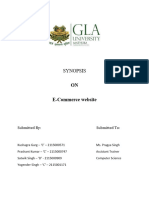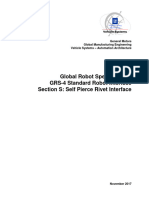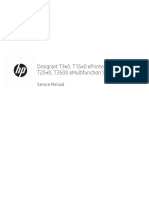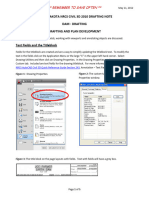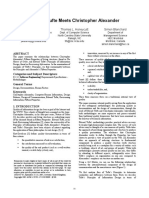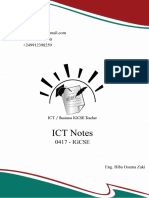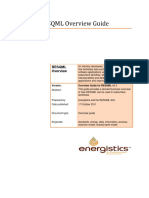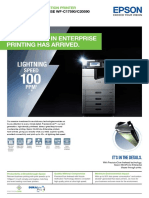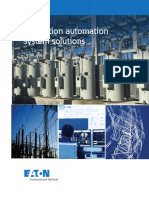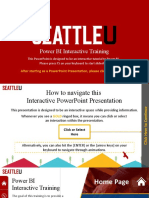A
Practical Activity Report
Submitted for
UI & UX SPECIALIST-(UCS542)
END-Semester Lab Evaluation
Ecommerce Website
Submitted to-
Dr.Vibha Jain
BE Third Year
Submitted by-
Rachit Bansal (102203155)
Abhiram Epuru (102203173)
Computer Science and Engineering Department
TIET, Patiala
August-December 2024
1
� INDEX
1. INTRODUCTION.............................................................................................. 3
2. PROBLEM STATEMENT..................................................................................4
3. SPECIFIC REQUIREMENTS........................................................................... 5
4. CONTEXT LEVEL DIAGRAM AND DATA FLOW DIAGRAM......................... 7
5. SYSTEM SPECIFICATION...............................................................................8
6. TOOLS USED...................................................................................................9
7. SAMPLE SCREENSHOTS.............................................................................10
8. OUTPUT REPORTS.......................................................................................13
9. CONCLUSION................................................................................................14
2
� INTRODUCTION
E-commerce has transformed the way businesses and consumers interact, enabling seamless
transactions across geographical boundaries. With the rapid advancement in technology, there
is a growing need for user-friendly, efficient, and scalable platforms that cater to both buyers
and administrators. This project, titled "Full Stack E-Commerce Website Using React.js,
MongoDB, Express, and Node.js," aims to bridge the gap between consumer demands and
business capabilities by leveraging modern web technologies.
Built using the MERN stack, the project provides a feature-rich platform that simplifies
online shopping. The front end, powered by React.js, ensures a dynamic and responsive user
interface, delivering an intuitive shopping experience. The back end, developed with Node.js
and Express, manages server-side operations, ensuring efficient data handling and seamless
communication between the client and server. MongoDB serves as the database, providing a
scalable and flexible solution for storing and retrieving product, user, and order data.
The platform incorporates essential e-commerce functionalities such as user authentication,
product browsing, shopping cart management, and secure checkout processes. Additionally, it
includes an admin panel for inventory and order management, making it a comprehensive
solution for businesses. Designed with scalability and performance in mind, the application
ensures compatibility across devices and provides a secure environment for handling user
data and transactions.
By addressing the challenges faced by small and medium-sized businesses in adopting digital
solutions, this project serves as a model for developing efficient and affordable e-commerce
platforms. It highlights the integration of modern technologies to create a seamless and robust
application, tailored to meet the needs of both users and administrators.
3
� PROBLEM STATEMENT
The increasing digitization of businesses has made e-commerce an essential component for
reaching a wider audience. However, many small and medium-sized enterprises (SMEs) face
significant challenges in transitioning to digital platforms. The primary hurdles include the
high cost of proprietary e-commerce solutions, technical complexities of deployment, and the
lack of customization options to meet specific business needs. Existing platforms are often
either too rigid, offering limited flexibility for growth, or overly complex, requiring
specialized skills to manage and maintain.
Moreover, customers today expect seamless, responsive, and intuitive online shopping
experiences. A poorly designed e-commerce platform can lead to user dissatisfaction,
abandoned carts, and ultimately, loss of sales. Key areas like real-time product availability,
secure payment gateways, and efficient data management are often overlooked in many
solutions. This creates a gap between user expectations and the services businesses can
deliver.
Another critical challenge lies in the management of back-end operations. Admins need
efficient tools to monitor inventory, track orders, and process transactions. Without a robust
and scalable system, businesses struggle to adapt to increasing demands, especially during
peak times such as seasonal sales or promotions.
This project aims to address these challenges by developing a scalable, user-friendly, and
customizable ecommerce platform. Using the MERN (MongoDB, Express, React.js, and
Node.js) stack, the solution integrates modern technologies to provide a seamless experience
for end-users while simplifying administrative tasks. By focusing on affordability, ease of
use, and scalability, this project bridges the gap between traditional businesses and the
demands of a digital marketplace.
4
� SPECIFIC REQUIREMENTS
a) Functional Requirements
i) User Authentication and Authorization:
Allows users to register and log in using secure credentials.Providing
role-based access, such as admin access for managing products and
orders.
ii) Product Management:
Admins are able to add, update, and delete products.Support for
product categories, descriptions, images, and stock availability.
iii) Search and Filter Options:
Enabling users to search for products by name or category.Providing
filtering options such as price range, ratings, and product availability.
iv) Shopping Cart:
Allowing users to add products to a cart and adjust quantities.Cart data
is persist for logged-in users even after page refresh.
v) Order Placement and Tracking:
Users are able to place orders securely and view order history.Admins
have the ability to update order statuses (e.g., "Processing," "Shipped,"
"Delivered").
vi) Payment Integration:
Integrating a secure payment gateway to handle transactions.Including
validation to ensure accurate billing and transaction success messages.
vii) Responsive Design:
The application is fully responsive, providing a seamless experience
across devices (mobile, tablet, and desktop).
viii) Admin Dashboard:
A dedicated interface for administrators to manage inventory, monitor
user activity, and view order statistics.
5
�b) Non-Functional Requirements
i) Scalability:
The system support increasing numbers of users and products without
performance degradation.
ii) Performance:
Page load times are minimal, ensuring a smooth user experience even during
high traffic.
iii) Security:
Implementing best practices for user data protection, including encrypted
storage for passwords and secure payment processing.
iv) Reliability and Availability:
Ensuring the platform is operational 99.9% of the time, with robust
error-handling mechanisms to manage unexpected issues.
v) Maintainability:
Using clean and modular code to facilitate easy updates and feature additions
in the future.
vi) Cross-Browser Compatibility:
Ensuring the application functions consistently across major browsers like
Chrome, Firefox, Safari, and Edge.
vii) Ease of Use:
Designing the interface to be intuitive for both end-users and administrators,
minimizing the learning curve.
6
� CONTEXT LEVEL AND DATA FLOW DIAGRAM
Context Level Diagram -(Level 0)
Data Flow Diagram -(Level 1)
7
� SYSTEM SPECIFICATION
1. Hardware Specifications
Development Environment:
● Processor: Intel Core i5/i7 or AMD Ryzen 5/7 (or equivalent).
● RAM: 8 GB (minimum); 16 GB (recommended for smoother development).
● Storage: 256 GB SSD (minimum); 512 GB SSD or higher (recommended).
● Graphics: Integrated GPU (sufficient for web development).
● Display: Full HD (1920x1080) resolution monitor.
2. Software Specifications:
Development Tools:
● Operating System: Windows 10/11.
● IDE/Editor: Visual Studio Code (preferred) or any text editor.
● Version Control: Git with GitHub/GitLab for code management.
● Package Manager: npm (Node Package Manager).
Frameworks and Libraries:
● Frontend: React.js with Material-UI or Bootstrap for styling.
● Backend: Node.js with Express.js for API development.
● Database: MongoDB (NoSQL database for efficient data handling).
Browsers:
● Google Chrome, Firefox, or Edge (latest versions for development and testing).
Additional Tools:
● Postman: For API testing.
● MongoDB Compass: GUI for managing MongoDB.
8
� TOOLS USED
The successful implementation of the Full Stack E-Commerce Website was made possible by
leveraging a variety of tools for development, testing, and deployment. These tools were
chosen to ensure efficiency, scalability, and maintainability. Below is a detailed explanation
of the tools used and their roles in the project:
1. MERN Stack
● MongoDB: A NoSQL database used to store and retrieve product details, user
information, and order data efficiently. Its schema-less nature made it adaptable to
changing data structures.
● Express.js: A lightweight and flexible framework for building server-side
applications and RESTful APIs. It helped in managing user requests and performing
CRUD operations.
● React.js: A powerful front-end library used to create a dynamic and responsive user
interface. It ensured seamless navigation and improved user experience with reusable
components.
● Node.js: A runtime environment that allowed us to execute JavaScript on the server
side. It facilitated efficient handling of back-end operations and server-side scripting.
2. Postman
● Used for testing APIs during development. It allowed us to validate the functionality
of routes and endpoints, ensuring smooth communication between the client and
server.
3. MongoDB Compass
● A GUI tool for visualizing and managing the MongoDB database. It simplified
querying and testing database operations during development.
4. Git and GitHub
● Version control systems were employed to track changes, manage the codebase, and
enable collaboration. GitHub repositories were used to store and share the project
securely.
9
� SAMPLE SCREENSHOTS
1) Main page
2) Men page -
3) Women page -
10
�4) Kids page -
5) Cart image -
6) Product List image -
11
�7) Admin page image -
12
� OUTPUT REPORTS
This section outlines the key reports generated during the development and testing phases of
the Full Stack E-Commerce Website. Although the actual documents are not included, the
following details summarize the process and key insights.
a. API Testing Report
API testing was conducted using Postman to validate the functionality and reliability of
various endpoints. The following key endpoints were tested:
● User Login Endpoint: Ensured successful authentication and token generation for
valid credentials.
● Product Search Endpoint: Verified that search queries return accurate product
details based on filters and categories.
● Cart Update Endpoint: Confirmed the addition and removal of items from the user
cart, along with proper error handling for invalid requests.
b. Debugging Logs
During development, debugging was performed extensively using the following methods:
● Console Logs: Key application states, such as database connection status and API
request payloads, were logged.
● Error Handling Middleware: Error messages and stack traces were captured to
identify and resolve issues effectively.
13
� CONCLUSION
The development of the Full Stack E-Commerce Website using the MERN stack has been a
comprehensive journey encompassing multiple aspects of modern web application
development. This project was undertaken with the aim of creating a user-friendly, efficient,
and scalable platform to streamline the online shopping experience for both customers and
administrators. By integrating technologies like MongoDB, Express.js, React.js, and Node.js,
the system ensures seamless interactions between the front-end, back-end, and database
layers.
One of the major accomplishments of this project is the dynamic and responsive interface
built with React.js, enabling customers to browse and interact with the platform effortlessly.
The use of MongoDB as a NoSQL database has ensured efficient storage and retrieval of
data, making the system suitable for handling real-time operations like user authentication,
product browsing, and order processing. Additionally, the back-end, powered by Node.js and
Express.js, has been optimized for smooth API communication, ensuring that the data flow
between the client and the server remains robust and secure.
The project also emphasized scalability and maintainability, making it adaptable for future
enhancements such as integrating advanced features like AI-driven product recommendations
or multiple payment gateways. Security has been given priority through practices such as
token-based authentication (JWT), ensuring data integrity and user trust.
In conclusion, this e-commerce platform successfully demonstrates how modern web
technologies can be leveraged to create a reliable, feature-rich solution. While this project has
met its initial objectives, it lays a strong foundation for further development, addressing the
evolving needs of both businesses and customers in the digital age. This achievement reflects
not only technical proficiency but also the ability to design and implement solutions that align
with real-world requirements.
14








































